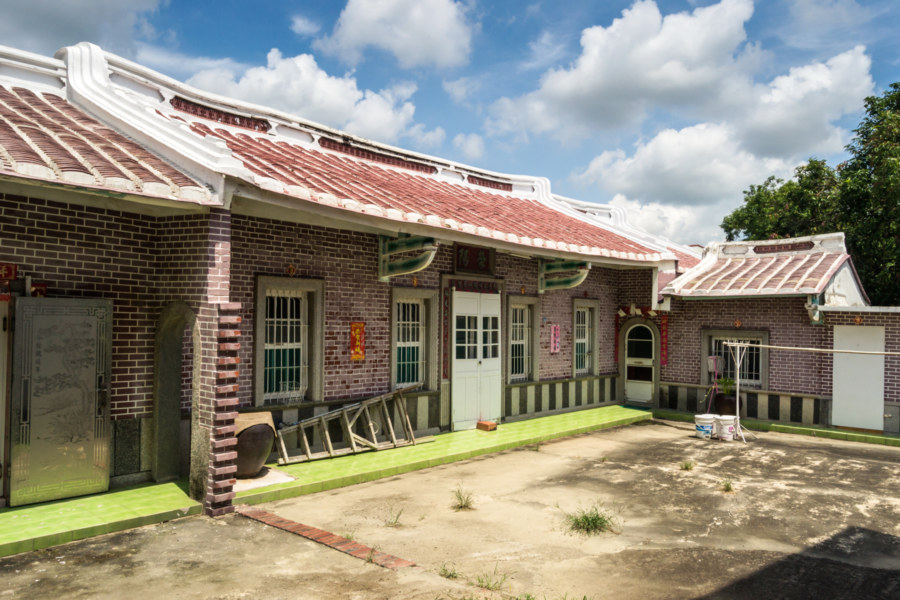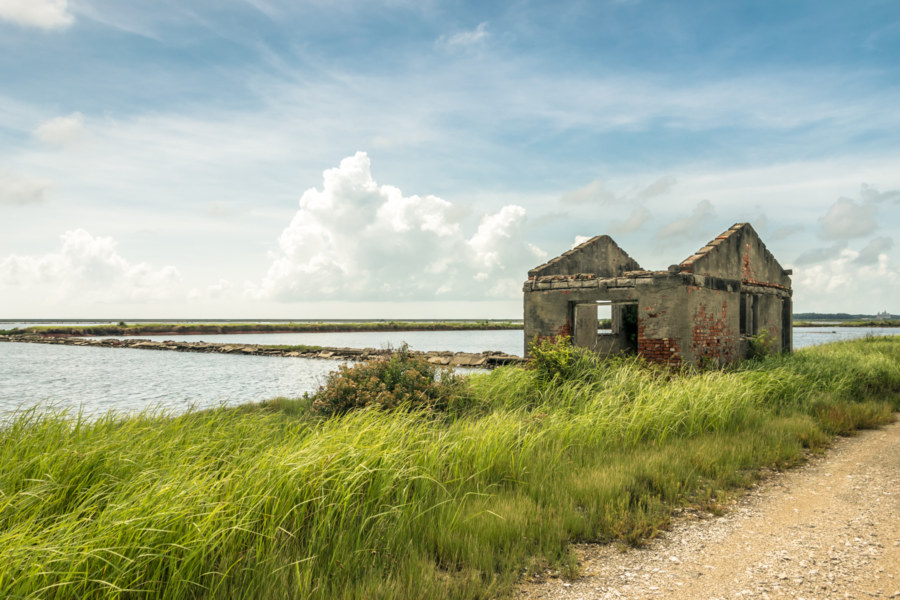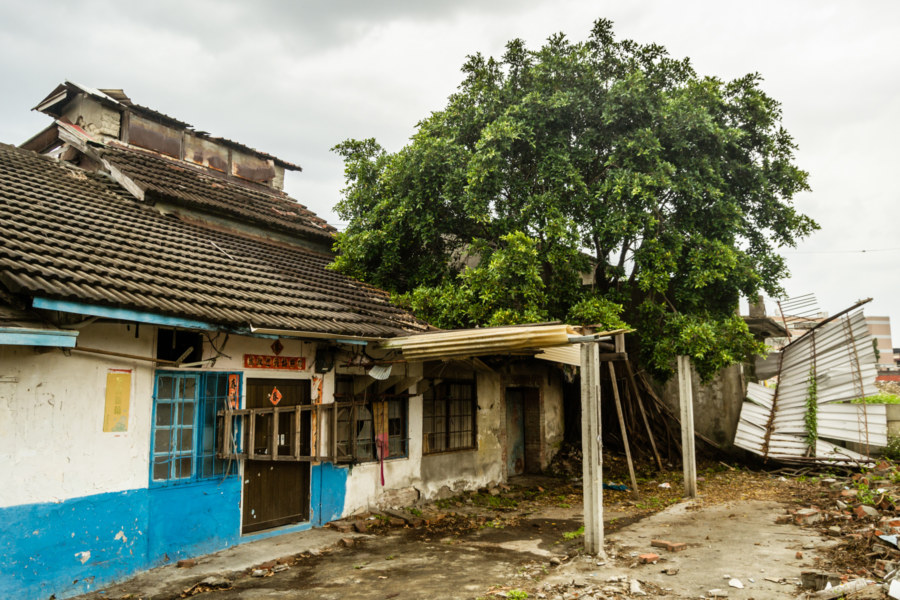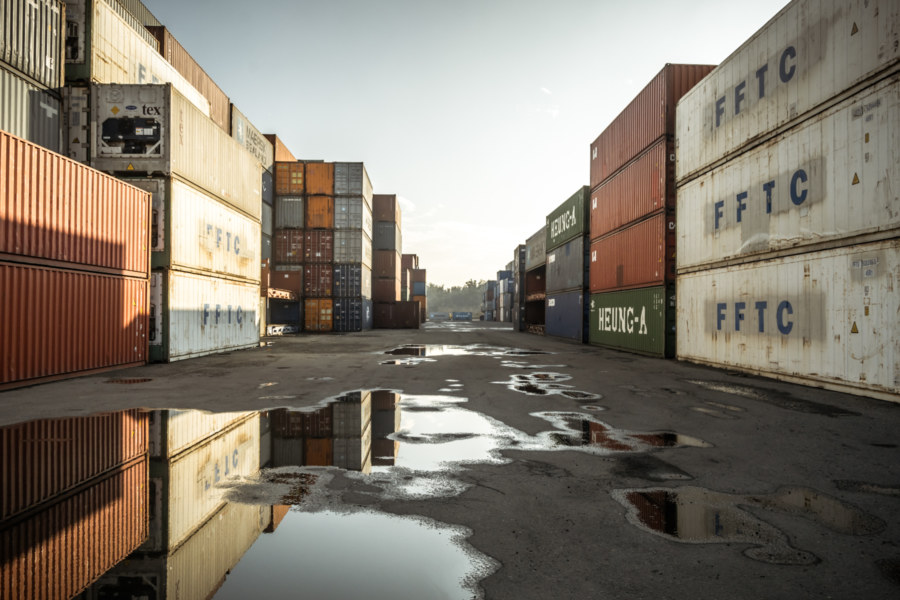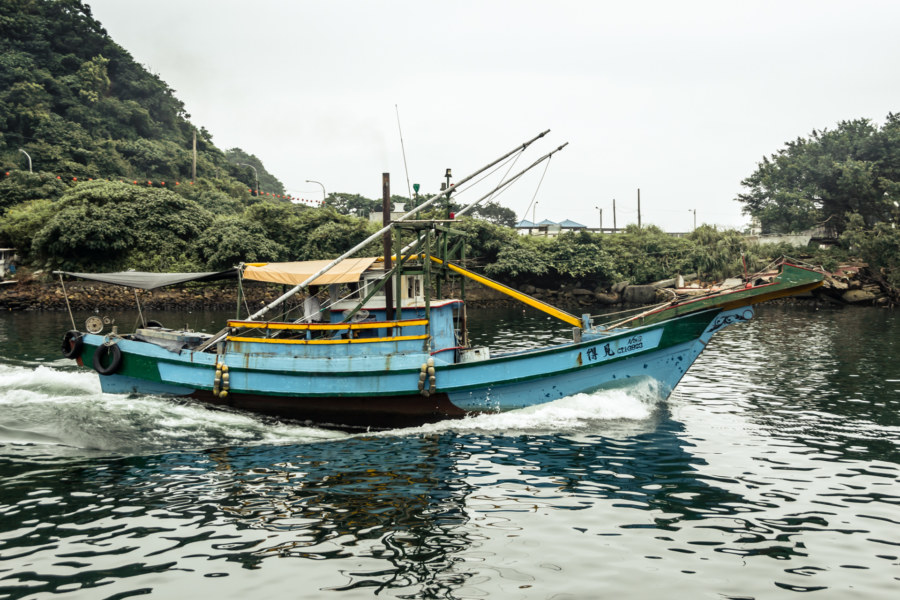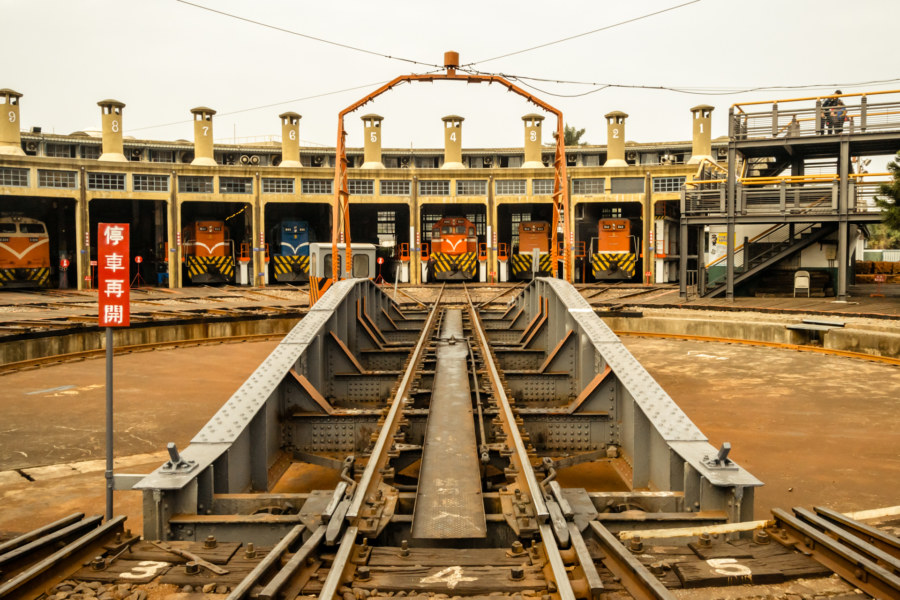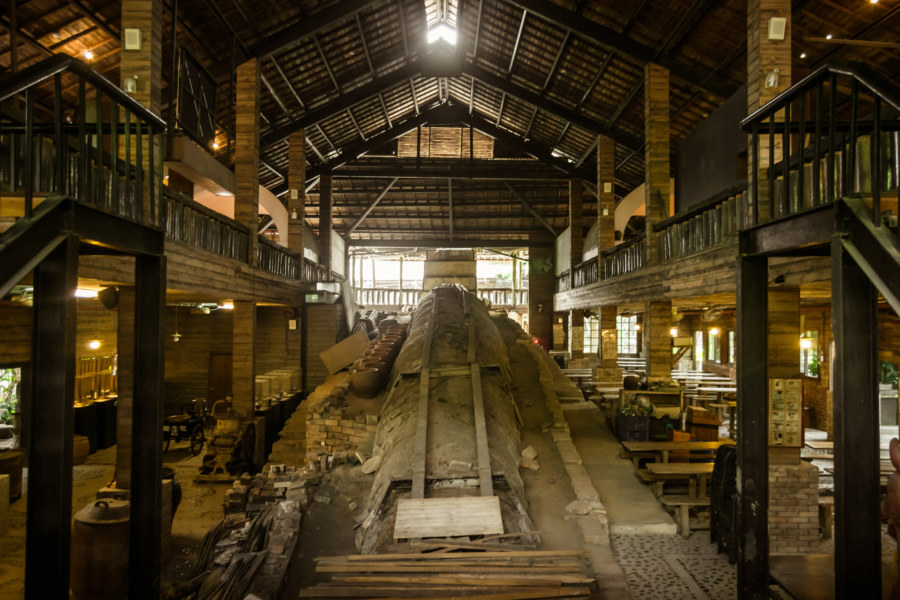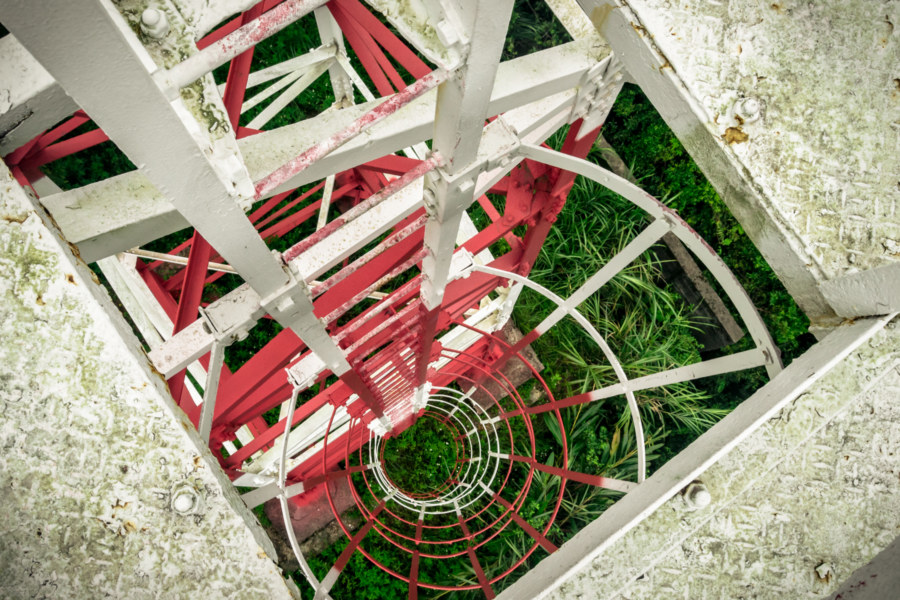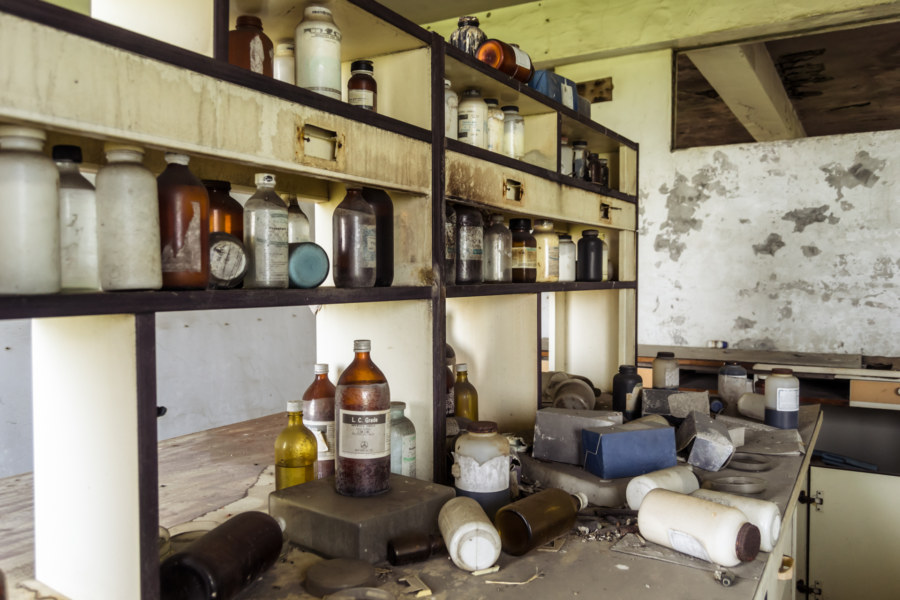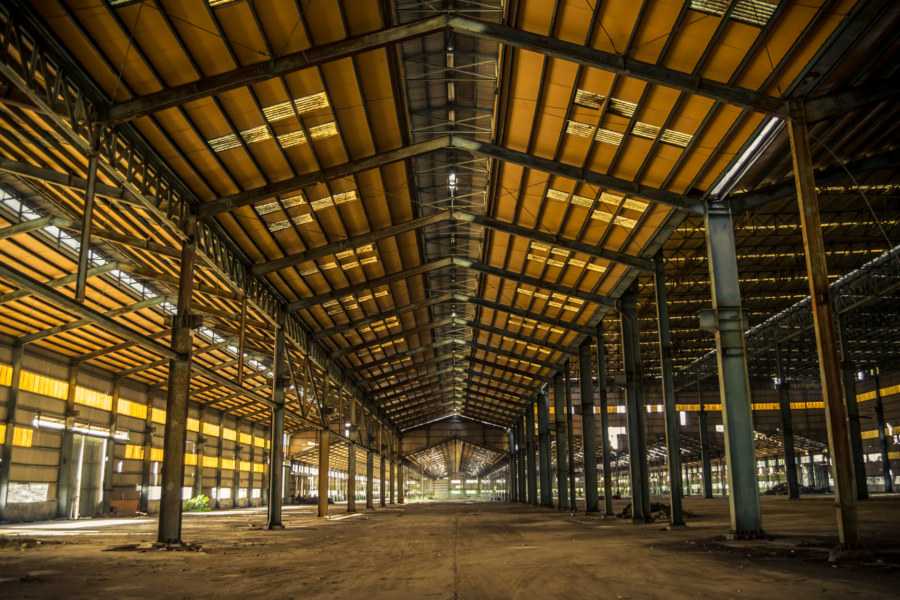Bicycle touring is one of the best ways to experience Taiwan. I don’t have an opportunity to go touring as much as I’d like but managed to find some time last year, in June of 2015, to embark upon a multi-day bicycle trip around southern Taiwan. My intention was to cover some of the same territory that I had rushed through on my first bicycle trip down south in 2013. I ended up racing a typhoon from Kenting to Taitung City that year—so the chance to explore the backroads of Pingtung at a more relaxed pace really appealed to me. I started my journey in Tainan, my favourite city in Taiwan, and cycled through Kaohsiung to Pingtung City, putting about 70 kilometers behind me. Gathered here are some photos from the first day of this trip, continued here.
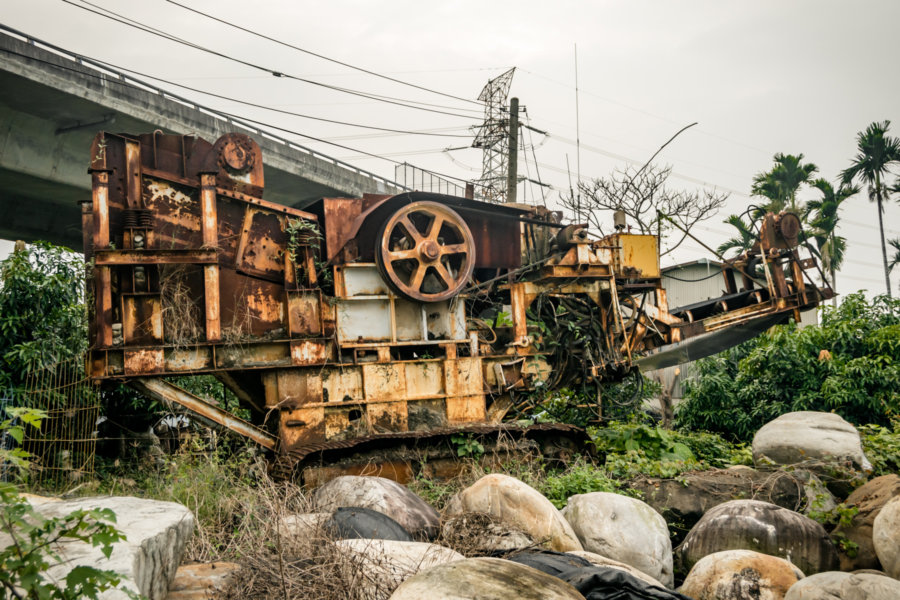
Machines conspiring to create the technological world we live in. See also: commercial, residential, buildings, and urban.
Adjacent Terms
Qingkunshen Fan-Shaped Saltern 青鯤鯓扇形鹽田
The southwestern coastal region of Taiwan is salt country. From Budai in Chiayi down through Beimen, Jiangjun, and Qigu in Tainan, an incredible expanse of manmade salt evaporation ponds sprawl across a completely flat and almost featureless landscape, much of it reclaimed from the briny lagoons that line the coast. Salt has been produced here for more than three centuries by channeling seawater into artificial enclosures and letting the strong tropical sun do the rest. Taiwan’s accession to the WTO in 2002 doomed the industry and all remaining salterns (or salt fields, if you like) were decommissioned that same year. This led to the abandonment of the unique Qīngkūnshēn Fan-Shaped Saltern (青鯤鯓扇形鹽田), now a surreal reminder of the history of salt production in southern Taiwan.
Shuinan Tobacco Barn 水湳菸樓
Shuǐnǎn Tobacco Barn 水湳菸樓 is a historic Japanese colonial era building located in Beitun, Taichung. It is an “Osaka-style” tobacco barn (named after Osaka Castle) much like these more famous examples from Meinong. Nobody seems to know for sure when it was built, though this article claims it is a century old. Without better information I would say the 1930s are a safe bet—that’s when industrial-scale tobacco cultivation was spreading all over central and south Taiwan—but it might be older than that.
Taichung Jiande Container Yard 建得台中貨櫃場
Intermodal shipping containers are strangely fascinating to me. I am, like most citizens of consumerist democracies, dimly aware of their contribution to the background hum of global trade, but I seldom have an opportunity to see them up close—not in their natural environment, anyway. Most ports have security measures that prevent laypeople from gallivanting around container yards for obvious reasons.
Postcards From Nanfang’ao 南方澳明信片
Nánfāng’ào (南方澳) is a major fishing port in Su’ao, Yilan, on the east coast of Taiwan. It is located just south of the end of the Lányáng Plain (蘭陽平原), where a rocky headland juts out into the ocean to form a natural harbour. It opened in 1923 after development by the Japanese colonial authorities and is now considered one of the top fishing ports in the nation, often ranking in third place by measures unknown to me, and is particularly known for its record-breaking mackerel catch. Part of why the port is so productive has to do with the nutrient-rich Kuroshio Current (黑潮, literally “Black Stream”), which lies just offshore.
Changhua Roundhouse 彰化扇形車庫
One of the most extraordinary attractions in Taiwan is the historic Changhua Roundhouse 彰化扇形車庫, originally built in 1922 during Japanese colonial rule and still in operation today. Although information is hard to come by it seems that it might be the only roundhouse still operating in Asia—and certainly one of the oldest still in regular use anywhere in the world. Every other roundhouse I researched for this article has been abandoned, demolished, repurposed, or converted into a museum—and those rare few that are still operational have been mighty hard to date. As such, the Changhua Roundhouse is a dream to visit for a railway enthusiast like myself, particularly since the ambiance hasn’t been ruined by the sort of tacky treatment you’ll often find at Taiwanese tourist attractions. After signing in with the guard at the gate I had free run of the place—and as you can see from some of the following photos, nobody minded me getting shockingly close to moving trains as the mechanics went about their daily routines.
Shuili Snake Kiln 水里蛇窯
The Shuili Snake Kiln 水里蛇窯 is a wood-fired pottery kiln on the outskirts of Shuili, Nantou. The name is derived from the kiln’s serpentine shape, though to my eyes it looks more like a slug than a snake. Founded in 1927 by master potter Lín Jiāngsōng 林江松, it remained a family business for generations before being opened to the public as a “ceramics park” in 1993.
Asia Cement Aerial Tramway 亞泥空中纜車
Yesterday I went out with a friend to explore several abandoned and neglected sites in Hsinchu, Taiwan. Our first stop was one of many mothballed cable car 空中纜車 towers in Guanxi connecting a stone quarry near Yùshān Village 玉山里 (formerly known as Chìkēshān 赤柯山) with a cement plant next to Jiǔzàntóu Station 九讚頭車站 in Hengshan. There seems to be no general agreement about the formal name for the system so I’m picking one of many options and dubbing this the Asia Cement Aerial Tramway 亞泥空中纜車 for the sake of simplicity.
Peiyuan Industrial Aquaculture Factory 培源殖產工廠
Bicycle touring is one means by which I discover many abandoned places in Taiwan. Ride in just about any direction long enough, keep your eyes peeled, and you’re bound to encounter the telltale signs of decay and neglect sooner or later. Such was the case one fine morning in June 2015 when I set out to have breakfast in Fangliao, a small town along the coast of central Pingtung, while en route to Hengchun, at the southern tip of the island. I had barely been awake for half an hour when I noticed this partially overgrown ruin along the roadside.
Yutian Automotive Factory 羽田汽車工廠
The massive ruins of the Yǔtián Automotive Factory 羽田汽車工廠 are located on the Dayeh University campus in Dacun, Changhua. There are four main buildings, each approximately 360 meters in length and 90 meters across for an estimated total of 32,500 square meters apiece. Outside of the Changhua Coastal Industrial Park 彰化濱海工業區 in Lukang (which opened in 1995) these buildings are probably the largest in the county—and the entire complex is readily visible from space.
